
In this first campaign game the advantage table didn’t come into play as neither player rolled a double when deciding who would be the aggressor. Scoring the lowest here (and therefore defending) the Carthaginians would generate and place the first peace of terrain. Choosing from the options generated they placed a large forest on the Romans right flank. The heavy Roman infantry are decidedly disadvantaged when forced to move or fight in this terrain. Thus, it was hoped the forest would restrict the deployment options for the legionaries. Rolling on the terrain table after the forest was in place Romes dice total generates a village. This can’t be placed within 8H (movement units) of the forest so they decide to position it on the opposite side of the table. In doing so they hoped to defuse the Carthaginians advantage in light horse. Forcing any flanking maneuvers to take the long way around. Lastly, a river was placed on the far side of the village. Not what the Carthaginians wanted, but what they rolled and therefore had to place.
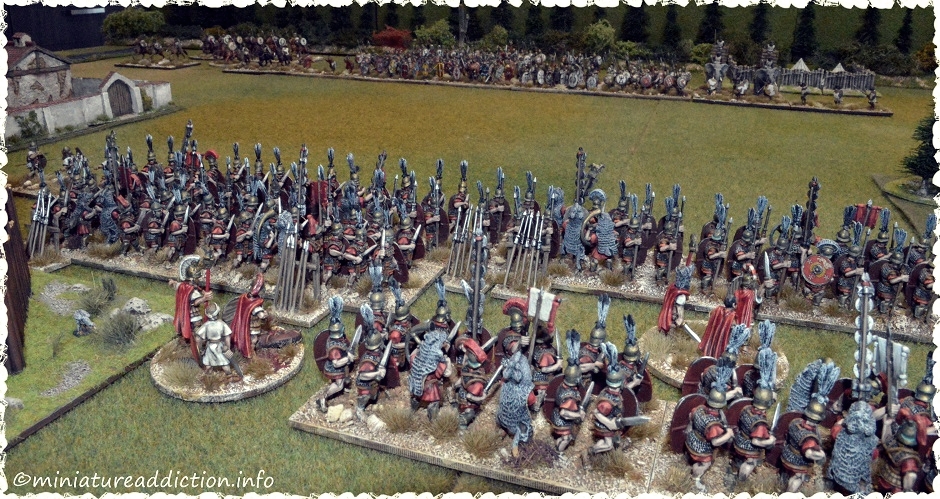
Deployment and Battle Plans

Rome: The Heavy infantry are to form up in between the forest and the village ready to lead the assault. What little cavalry they have will be stationed behind the village guarding the gap between the town and the river. The Scutarii will assist the cavalry by capturing the village. All remaining light troops will be tasked with covering the heavy infantry and securing the forest. Carthage: The bulk of the army will form up in the centre and await the Roman attack. A strong contingent of Numidians will be sent around each flank. Light horse will move down the river while the javelin men will make for the forest. All going well the Romans will be forced to weaken the centre to protect their flanks.
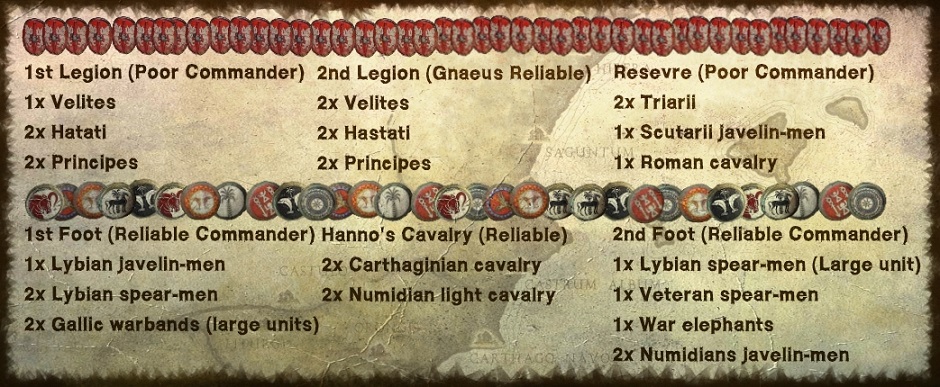
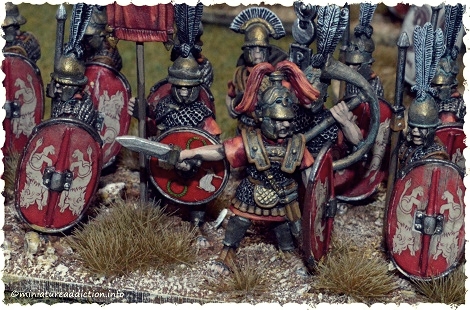
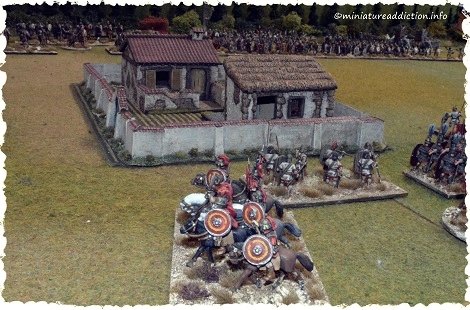

Opening moves
Rome’s Velites along with their Scutarii mercenaries make the opening moves. They quickly secure both the village and the wooded area to the right of the Roman line.
Libyan javelin men move to confront the Scutarii now occupying the village. Seeking to slip past unnoticed the Numidian light horse race down the riverbank.
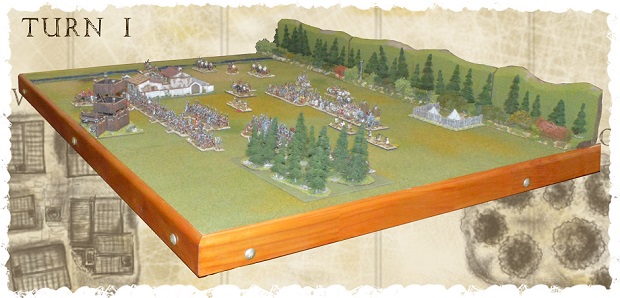

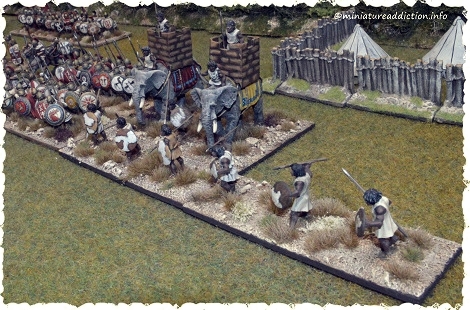

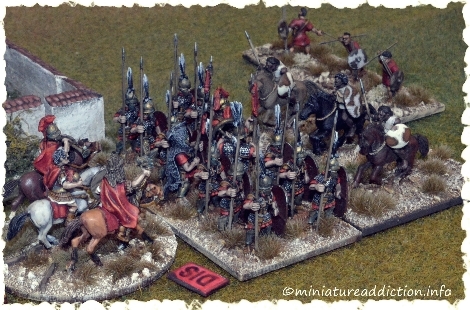
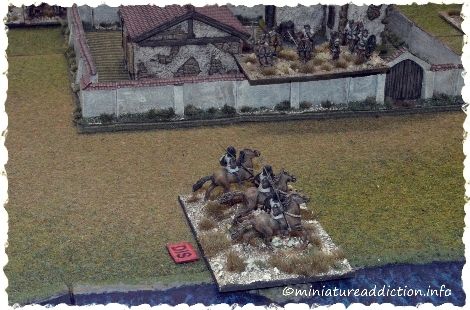
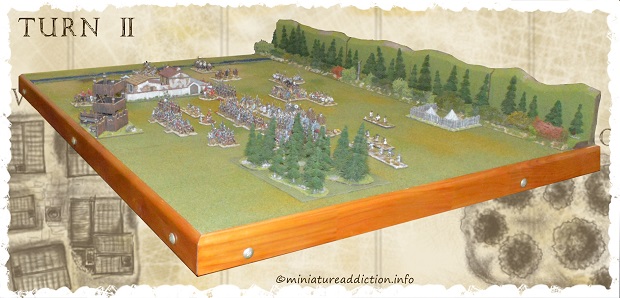
A dice roll of three at the end of turn one reduces the time clock down to eighteen points. The Romans gain the local initiative around the village once again with the Scutarii managing to hit and disorder some Numidian horsemen near the riverbank. On the opposite side of the village a unit of Triarii catches a second group of Numidian horsemen by surprise. The resulting melee proves inconclusive as does the elephant charge on the opposing flank.
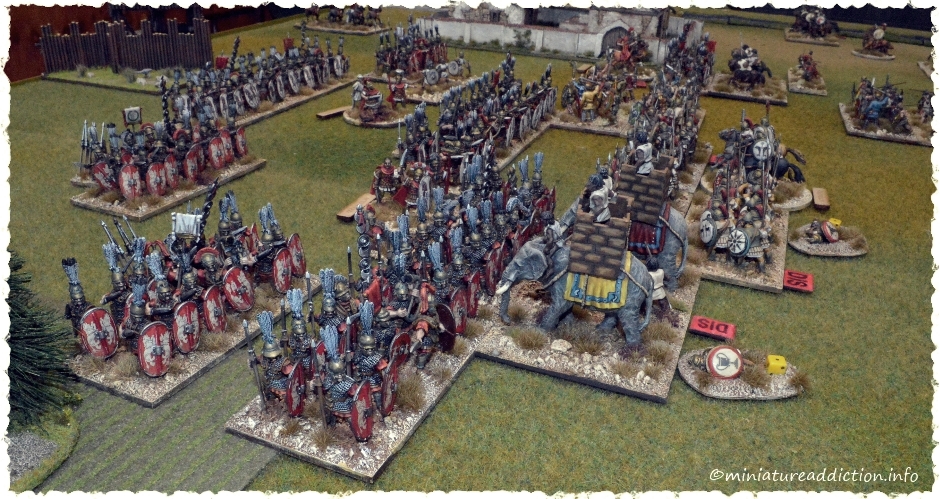


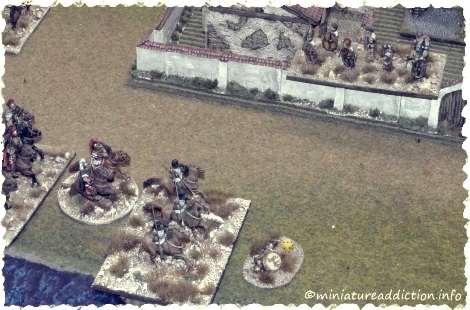
The time clock drops just one point to seventeen this turn. Rome wins the local initiative around the village again and the Numidian horse unsurprisingly lose their fight with the Triarii and are driven off. Near the riverbank the second unit of light horse comes under fire from the village. Disordered and rolling badly they take three wounds and are effectively out of the game. Hanno (the army’s commander) who had ridden up to rally the Numidians was also struck down by a javelin and removed from play. In the centre large units of heavy spearmen and Gallic warriors join the Carthaginian elephants in trying to break the main Roman battle line.


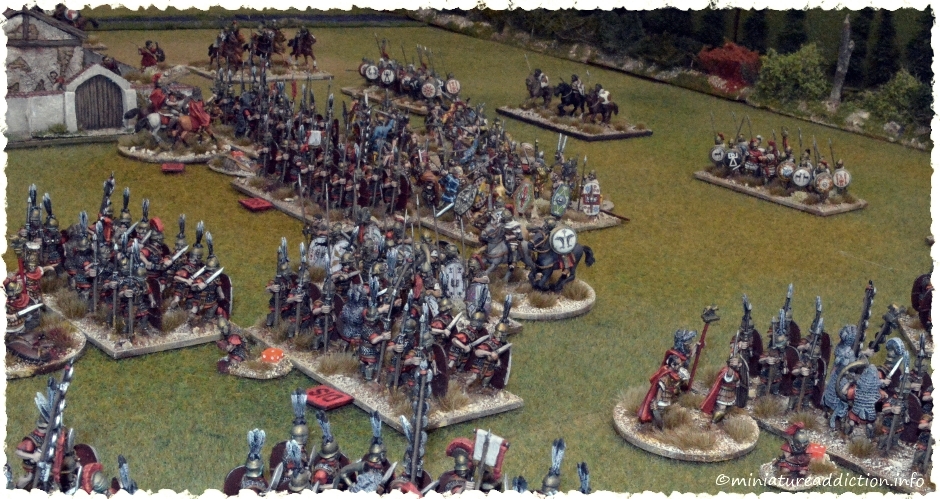
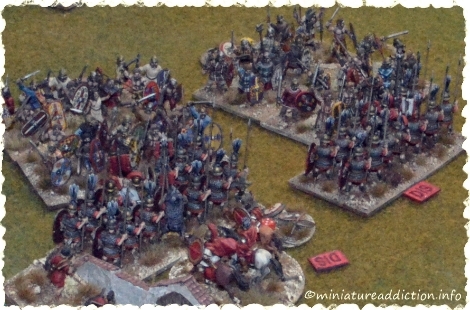
Turn four sees a five point drop in the time clock, down from seventeen to twelve. Both sides are really starting to hurt as the central slog fest gains momentum. All front line Hastati and Principe units are now disordered and down to their last couple of wounds. The Carthaginian’s situation is equally dire. The war elephants having rolled poorly in yet another round of combat, fail their cohesion test and are removed from play. Supporting the elephants was a large unit of heavy infantry. Badly battered these are now reduced to a single exhausted stand. Only a lone unit of veterans along with their general has managed to make any headway on this side of the table. Adding to their consternation the second Carthaginian sub-commander dishes up double ones on his initiative dice dropping his command ranking from reliable to poor.


Turn five and the time clock only has seven points left to roll. With potentially only two more turns in the game both sides need a big round this time. The Carthaginian start by breaking into the village with a unit of skirmishers. Scoring a lucky hit on the Scutarii who after rolling an equally unlucky cohesion test rout and are removed from play. Gallic mercenaries break the left-wing of the Roman army by dispatching a unit of Triarii. The Carthaginian commander then reinforces his crumbling centre with the medium cavalry stationed on his right-wing. In desperation the Romans press their advantage on the right destroying the exhausted spear-men. This breaks the command and leaves the Carthaginian camp defenseless
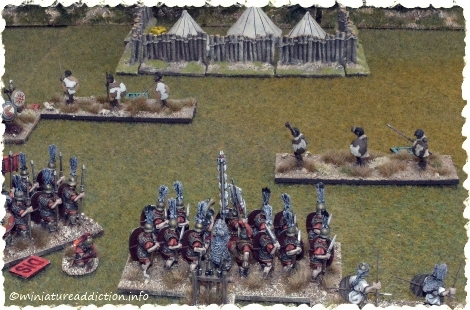
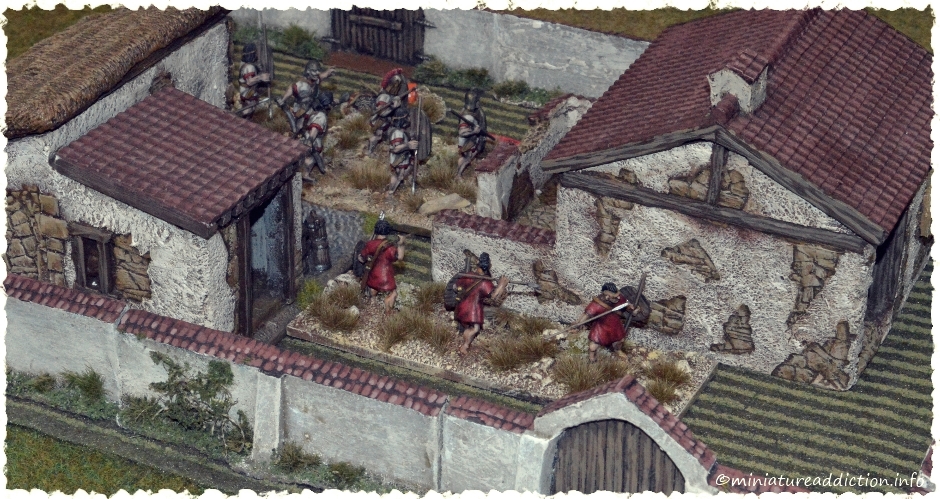

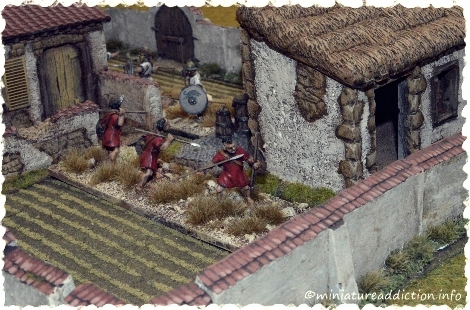
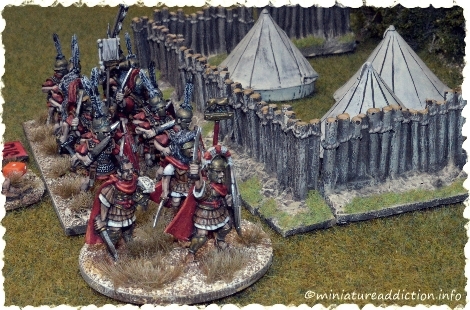
Turn six and the time clock drops four points down to three. Winning the initiative the Romans charge and sack the enemy camp. This is enough to break the Carthaginian army and win the game. All the Romans need to do now, is stay out of trouble until the end of the turn. Unfortunately for them the Carthaginians weren’t planning on just lying down and giving up. They proceed to throw anything still standing at the battered Roman units.
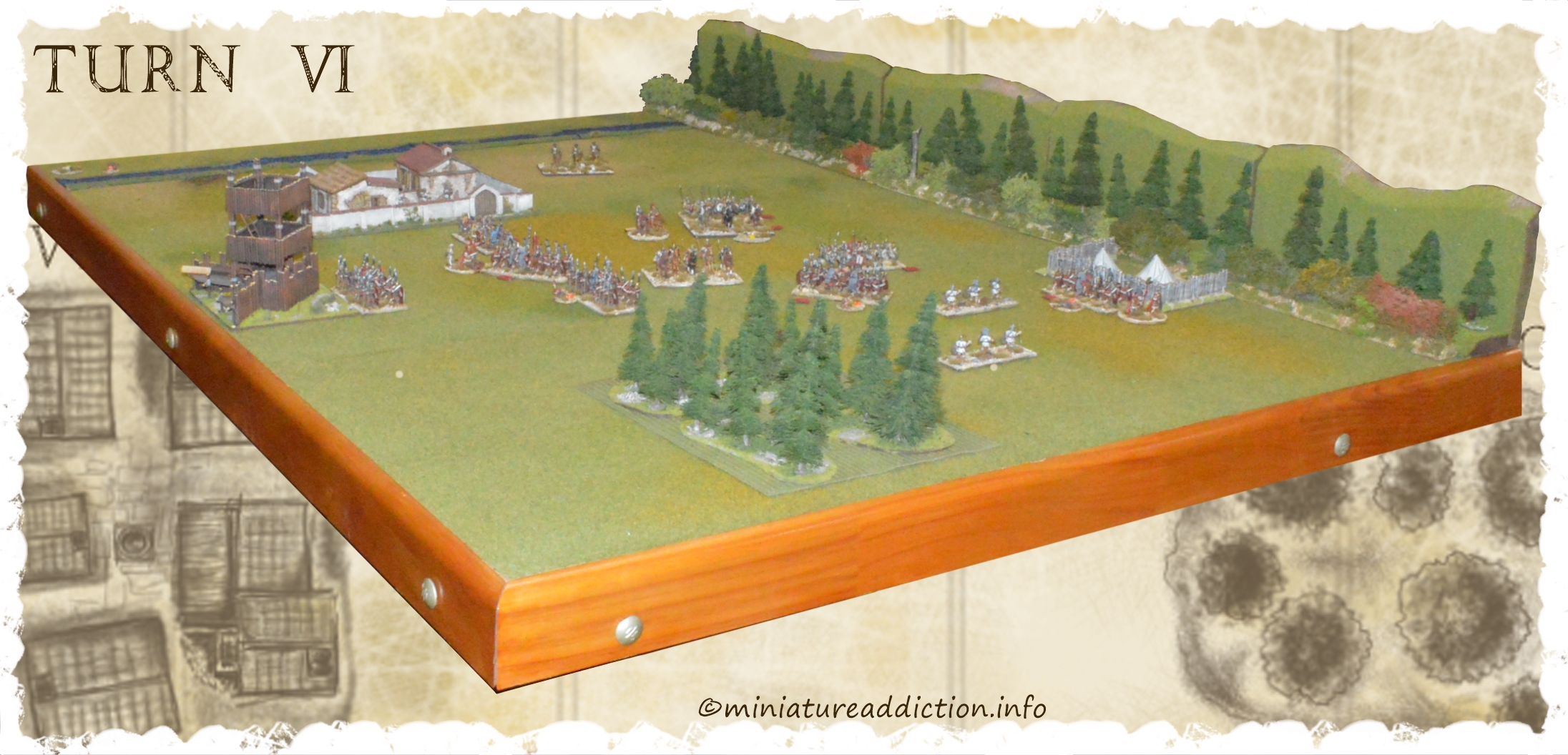
The Gallic war-bands renew their assault on the last element of Triarii. While fresh cavalry arrived adding their weight to the final attacks. These last rolls of the dice provide just enough pain to break a second Roman command and tie up the game.
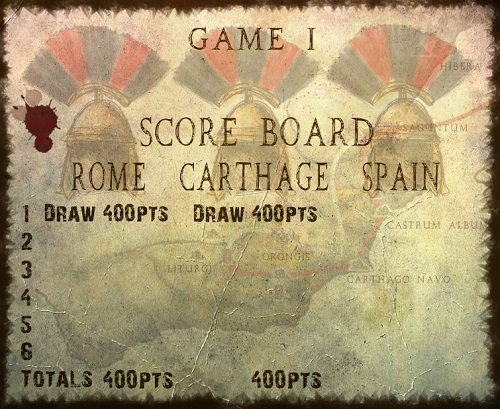
Failed Triumph
Both armies routed before the time clock got to zero ending the game in a Failed Triumph (draw). Each side now gains four hundred victory points and may choose between the two possible bonus options listed on the victory chart. Rome takes the tactical card option as none of their generals died or dropped a level during the game. The Carthaginian army however, lost their army commander (K.I.A) and a sub-commander also dropped from reliable to poor in turn three. Therefore, like the Romans they could take the tactical card in which case both generals would rejoin the army rated as poor commanders. Or their second option would be to forgo the tactical card and reinstate one of their two generals back to their original rating (reliable).